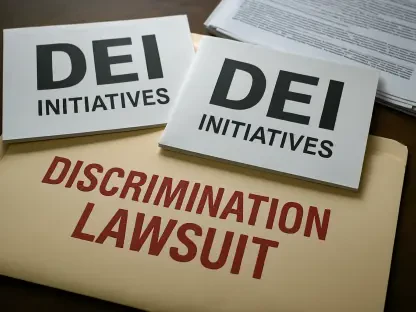The Central Bucks School District (CBSD) has found itself at the center of a contentious legal battle concerning gender pay disparities. The lawsuit, which accuses the district of violating the Equal Pay Act by compensating female teachers less than their male counterparts, reached a critical juncture when the jury was unable to reach a unanimous verdict, resulting in a mistrial. This landmark case underscores pressing issues of gender discrimination, systemic inequities in educational compensation, and the complexities involved in addressing such deep-seated grievances.
Jury Deadlock and Mistrial Declaration
The jury, consisting of six men and two women, deliberated for over two hours without reaching a consensus. Additional rounds of deliberation were ordered by U.S. District Court Judge Michael M. Baylson, but the jury remained divided by late afternoon, prompting the judge to declare a mistrial. Despite numerous attempts to resolve the deadlock, the jury could not align their interpretations of the evidence presented, highlighting the contentious and intricate nature of gender discrimination cases. This development marks a significant moment in the ongoing legal proceedings and underscores the challenges faced in proving systemic discrimination in a court of law.The decision to declare a mistrial after extended deliberations emphasizes the complexity of proving gender-based pay disparities, especially in fields like education where salary determinations can be multifaceted. This case illustrates the arduous task of convincing a jury of the systemic inequities that may not always be overt but are deeply embedded within institutional practices. It also communicates the profound implications for both the plaintiffs and the district, as the outcome could set a precedent for similar lawsuits nationwide, affecting how educational institutions address and rectify pay disparities moving forward.
Community Communication and District’s Stance
District’s Response Post-Mistrial
Following the mistrial declaration, CBSD promptly communicated with the community through an email, reinforcing its stance on fair hiring practices and denying any discriminatory actions based on sex or identity. The district emphasized its commitment to evaluating and improving its hiring mechanisms to ensure equitable treatment for all staff members. This communication aimed to reassure the community of the district’s dedication to fairness and transparency amidst the ongoing legal scrutiny, projecting a message of integrity and accountability.CBSD’s statement also underscored the high regard in which it holds its teachers, administrators, and staff, highlighting their essential contributions to the district. By addressing these issues directly with the community, CBSD aims to maintain trust and support, acknowledging the sensitivity and importance of the accusations while asserting their efforts to uphold equitable hiring practices. This proactive communication strategy reflects the district’s intent to navigate the legal challenges while maintaining a positive relationship with its stakeholders.
Plaintiffs’ Criticism and Resignation
Rebecca Cartee-Haring, a teacher and plaintiff in a related Equal Pay Act case against CBSD, announced her resignation shortly after the mistrial. She expressed frustration over the district’s treatment of teachers, criticizing the claim that a hung jury absolves the district of discriminatory practices. Her resignation and public statements bring to light the strained relations between some educators and the district administration, indicating broader issues of dissatisfaction and mistrust stemming from the legal challenges.Cartee-Haring’s decision to resign and her criticism of the district’s assertion of non-discrimination underscore the unresolved tensions and perceived inequities among the teaching staff. Her stance, backed by her personal experience within the district, conveys a more profound narrative about the struggles teachers face in advocating for fair treatment. This situation reflects the broader dissatisfaction that has fueled the lawsuit and the ongoing efforts to address these systemic issues within CBSD. Her resignation serves as a stark reminder of the personal and professional impacts of such legal disputes.
Settlement Offers and Legal Claims
Allegations of Substantial Settlements
Plaintiff Dawn Marinello, representing over 300 current and former female teachers in the lawsuit filed in 2021, claimed that CBSD offered significant settlements to persuade them to drop the case. These offers, according to Marinello, were rejected, indicating the plaintiffs’ determination to seek justice through the legal process. This assertion about potential settlements points to the high stakes involved in the lawsuit, both financially and reputationally, for the district and highlights the plaintiffs’ steadfast commitment to addressing the alleged disparities.Marinello’s statement that substantial settlements were offered but refused underscores the plaintiffs’ resolve to pursue the lawsuit despite opportunities for financial compensation. It reflects a broader commitment to effecting systemic change within the district and setting a precedent for equal pay practices. The willingness of the plaintiffs to reject settlements also indicates their confidence in the validity of their claims and their determination to establish accountability through the judicial process.
District’s Rebuttal of Settlement Claims
CBSD Board President Karen Smith disputed Marinello’s claims regarding settlement offers, describing them as inaccurate. This rebuttal adds another layer of complexity to the already contentious dispute, showcasing the differing narratives presented by both parties involved. The conflicting statements about settlement negotiations highlight the high tensions and strategic maneuvering taking place on both sides, which are crucial in understanding the broader context and implications of this case.The district’s rebuttal of the settlement claims emphasizes their stance that they have adhered to fair practices and have not attempted to mitigate the lawsuit through financial settlements. This discord between the plaintiffs’ assertions and the district’s rebuttal reflects the strategic importance of public perception and the legal battle’s broader implications. The conflicting narratives around settlement offers reveal the ongoing struggle to establish credibility, transparency, and justice within this high-stakes legal environment.
Testimonies and Closing Arguments
Plaintiff’s Arguments on Pay Disparities
Plaintiff attorney Ed Mazurek argued that female teachers were consistently paid less than their male counterparts, regardless of having similar qualifications and performing equivalent roles. Specific examples included male teacher John Donnelly receiving higher pay than female teacher Rebecca Cartee-Haring, despite having fewer years of experience. Mazurek highlighted patterns of rapid salary advancements for male teachers following the case filings, which were not mirrored for the plaintiffs, underlining the systemic nature of the alleged disparities.These arguments served to underscore the broader issues of gender-based pay inequities and their impact on female educators within the district. By presenting concrete examples and detailed comparisons, Mazurek aimed to demonstrate a clear pattern of unequal treatment that disadvantages female teachers. This approach sought to establish a compelling narrative of persistent gender discrimination that extends beyond individual cases to reflect systemic biases within the district’s compensation practices.
Defense’s Justifications of Pay Differences
CBSD’s attorney, Michael Levin, presented counterarguments focusing on the role-specific justifications for pay differences. He argued that some male teachers held combined roles, which warranted higher compensation. Levin emphasized that the plaintiffs selectively used data, highlighting the complexities in salary determinations based on subject matter and specific duties. The defense aimed to dissect the plaintiffs’ claims by providing context and rationale for the alleged pay disparities, suggesting that these differences were based on legitimate factors unrelated to gender.The defense’s strategy was to challenge the narrative of systemic discrimination by offering explanations grounded in the varied responsibilities and specialized roles held by different teachers. This nuanced perspective aimed to question the validity of the plaintiffs’ assertions and highlight the inherent complexities in evaluating salary equity within educational settings. Levin’s arguments underscored the importance of considering the multifaceted nature of teaching roles and the legitimate factors that can influence compensation levels.
Legal Instructions and Evaluations
Judge’s Instructions on Proof Requirements
Judge Baylson instructed the jury that the plaintiffs needed only to demonstrate a single instance of favorable treatment towards a male teacher based on gender to establish discrimination. This directive simplified the evidentiary requirements, focusing on the broader implications of even isolated instances of inequity. Mazurek highlighted the notion of willful disregard rather than intentional discrimination, noting that the HR director’s lack of responsibility for Equal Pay Act compliance might reflect systemic issues rather than individual bias.This nuanced perspective aimed to underscore the inadvertent perpetuation of discriminatory practices within the district. Judge Baylson’s instructions emphasized the broader principle that even isolated instances of unequal treatment could substantiate claims of systematic inequities. This approach aligned with the plaintiffs’ strategy to highlight patterns of unfair treatment and organizational practices that perpetuate gender discrimination, rather than focusing solely on explicit intent.
Broader Implications and Follow-Up Actions
The Central Bucks School District (CBSD) is embroiled in a significant legal dispute over gender pay disparities. The lawsuit alleges that the district has violated the Equal Pay Act by paying female teachers less than their male colleagues. The case took a notable turn when the jury failed to reach a unanimous decision, resulting in a mistrial. This high-profile case highlights critical issues of gender discrimination and systemic inequities in the educational sector. The mistrial adds another layer of complexity to an already challenging issue, reflecting the deep-seated grievances and difficulties in rectifying such entrenched injustices. At its core, the lawsuit emphasizes the ongoing struggle for equal pay and fair treatment in workplaces, with broader implications for how educational institutions address compensation equity. As the case continues to unfold, it serves as a stark reminder of the importance of addressing gender-based disparities and the obstacles that still exist in achieving true equality in the workforce.









